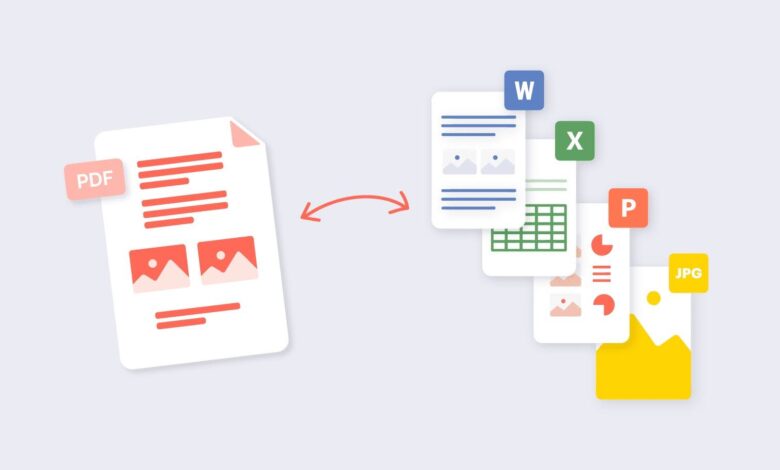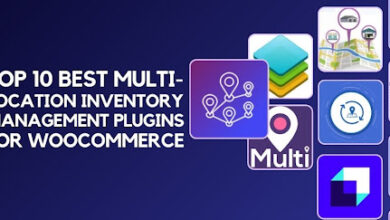5 Ways Digital Catalogs Can Boost Audience Engagement on Your Website

One thing that every modern brand is struggling with is keeping people interested after they have come to the brand’s website. It is already difficult to get clicks but how to keep visitors so that they browse, explore, and eventually make a purchase? That is a completely different problem.
In a world where people quickly scroll through content and have short attention spans, brands are using something that is unexpectedly very effective: digital catalogs. To a great extent, the catalogs which were once printing marketing’s humble tools have transformed into the immersive, data-rich experiences that help to tell the story and bridge the sales gap. They are not just photos and prices of the products in the printed pages. Now, they are interactive, responsive, and very engaging.
Firstly, digital catalogs are enabling brands and publishers to change their websites into places where people come for a longer time, have more interaction, and develop a deeper connection with what they see.
A Visual Experience That Stops the Scroll
No one really tries to hide the fact that visual storytelling wins the internet. The audience of today is mostly influenced by the movement and the atmosphere through video, animation, or some kind of dynamic design. Digital catalogs are just that.
By digital catalogs moving, we mean that they are not like the usual product grids or static PDFs. They flip, glide, and expand. Users can zoom in on a product, look at lifestyle photography if it is in the form of a video, or watch a short clip that helps them understand the item better. In a way, it is almost comforting and reminiscent of old times while still being very modern and stylish to touch your screen and see the page change just like in a book or magazine.
Such a user interface makes people want to stay on the site. They do not leave after a few seconds, but they stay longer. They go through more pages, find new collections, and have fun with the experience instead of trying to finish it as fast as possible. Thus, publishers get a longer dwell time, and brands have a stronger emotional connection with their audience.
Turning Browsers Into Participants
One of the major changes digital catalogs bring to the table is the concept of participation. Your audience is not just viewing the content, they are interacting with it. Every click, swipe, and scroll becomes a new way of engaging with the content.
If a website visitor can tap to see product details, hover for a close-up, or play a quick video demo, then they are certainly not passive. They have become a part of the experience. This very simple change in the relationship between the parties helps to create a feeling of involvement which cannot be achieved by static images.
Such participation also helps to store the information in the memory. Studies have been consistently showing that people remember content they have interacted with more than content they have only observed. So when your website features an interactive catalog, you are not merely presenting your offer but you are taking the customers on a sensory journey which is memorable.
It is engagement in its most natural form: curiosity that is self-rewarding. Visitors engage in the exploration activity because it gives them pleasure.
Storytelling That Feels Personal
Engagement is not only about clicking but also about connecting. A brand story, effectively communicated, makes its audience to experience some kind of emotion. Digital catalogs are a means for brands to present that story in a visual way, thus, not letting the reader to be overwhelmed.
Each page gets to be a part of a story: a seasonal lookbook, a source of design inspiration, a short clip of the behind-the-scenes of the making. Instead of the readers having to abruptly change from one isolated product page to another, they get to move through a curated experience which appears to be deliberate and human.
This style has the power to attract rhythm. One can begin with lifestyle photos, proceed to detailed product features, and finally, mix in brand philosophy or designer notes. It is like a movie and the reason why it is successful is that it turns the shopping into less browsing and more exploring a world kind of activity.
And the best part? You don’t need to reinvent your content to make it engaging. Often, you can take your existing product catalog and simply convert it from PDF to digital. With tools designed for interactive publishing, it’s easy to bring static material to life complete with animations, embedded links, and responsive design that fits perfectly on any device. Once your catalog becomes dynamic, your website instantly gains a richer, more immersive layer of storytelling.
Real-Time Updates That Keep Visitors Coming Back
One of the most frequent causes of websites losing user engagement over time is the presence of stale content. When users are exposed to the same promotions, images, and copy during every return visit, they tend to cease exploring.
Digital catalogs are the perfect solution for that problem. Since they are cloud-based, the updates are immediate without any need for reprinting or waiting. You have the ability to refresh visuals, add new products, or change prices on the fly. So, every visit doesn’t just feel like a new one, but the content is also alive and up-to-date.
The fact that the content is always fresh is what actually drives the traffic back to the site. Customers are aware that new things such as a seasonal drop, a refreshed collection, or updated inspiration are waiting for them. Thus, publishers get a steady stream of returning readers, while retailers enjoy a sustained focus of their loyal buyers.
On top of that, digital catalogs can also be easily linked with the analytics tools from a functional point of view. It implies that you can know which parts of the catalog people engage with most, which products get the clicks, and which section is the exit point. This knowledge empowers you to constantly improve the experience, thus, the engagement grows in a cycle manner.
The Bridge Between Discovery and Conversion
Arguably, one of the least recognized powers digital catalogs wield is their proficiency in leading user engagement to immediate sales. The latter are often the result of the inspiring but non-selling PDFs or print materials, yet interactive catalogs can, in an instant, link browsing to buying.
Indeed, the process is detached from traditional purchasing and thus, it is revolutionary in nature. In a nutshell, it is a direct, simple, and frictionless path. The route from discovery to checkout becomes a mere walk in the park.
Merging shopping and browsing, this strategy capitalizes on the user’s exploratory mood and at the same time grants them a convenient tool. Opening a new tab to search for the product or to navigate through a disorganized menu is no longer necessary. They have everything they need, right there.
For brands, this short circuit from engagement to sales is not only a UX upgrade but also a strategic advantage. It transforms the catalog into not only a marketing tool but a revenue driver. And to audiences, it is a nice feeling, e.g., instant gratification coupled with authentic discovery.
Research from the Baymard Institute shows that better checkout UX alone can yield up to a 35% increase in conversion rate, underscoring how reducing friction turns engagement into purchases. (Baymard – Checkout UX Research)
A Deeper Emotional Connection Through Design
While technology is the factor that makes the interaction possible, design is still the main factor of engagement.
An aesthetically pleasing catalog is able to make individuals experience something prior to even understanding the reason for it. The brand recognition that people get is heavily dependent on how long they stay and through which they experience your brand i.e. the repertoire of the layout, the progression of the colors, the equilibrium of the text and the pictorial representation, it all contributes to it.
Digital catalogs are not constrained by the limitations of traditional e-commerce grids and thus, enable one to have real creative control over them. You may style them in the same way as editorial magazines stylish, intimate, saturated with brand personality. Therefore, each scroll can be perceived as turning a page of a narrative rather than being a recipient of a sales talk.
This emotional aspect is what really counts. People may forget the prices, but they remember the way your content made them feel. A well-thought-out catalog design draws the viewer in with silent and composed interest; it does not blatantly or aggressively advertise the product/service (“buy now”)
That is when engagement becomes seamless, not artificially created, when design and technology are functioning together as one. It reaches to the level of the user’s rhythm and that is what keeps them for a longer period of time.
The Bigger Picture: Engagement as Relationship
Audience engagement, really, is not only about the numbers but mostly it is about the relationships that are established. By doing so, the person is developing trust and familiarity, which in turn are key elements of any relationship, with your content. Interaction is a very important element in human communication, so it is perfectly logical that the more meaningful that interaction is, the bigger the bond will be.
In that sense, digital catalogs are an excellent tool for companies to establish communication with potential customers and even with already loyal ones. It is a very fast world that we live in nowadays and it seems that some qualities such as craftsmanship and care have been lost. By the act of slowing down and browsing through the catalog, the user is invited to do just that and he or she can actually enjoy the experience instead of just making a quick transaction, and this, of course, is much more valuable.
In brief, the use of digital catalogs is a very efficient way to generate engagement that can then be converted into sales, no matter what you are, a retailer, a publisher or a brand. They combine elements of arts and analytics, and emotion and efficiency, storytelling and sales, and it is this balance that is responsible for the success of websites today.
Final Thoughts
As websites are trying to get people’s attention for a shorter and shorter period of time, the brands that succeed will be those that make people want to stay.
Any of these things is what digital catalogs do. They introduce interactivity, narrative, and beauty in one format, thus, changing the way users interact with an ordinary browsing into meaningful exploration. They do not simply allow viewing; rather, they encourage users to take part. And by doing this, they convert each visitor into a curious reader, a potential customer, and eventually, a loyal fan.
Therefore, if you have been using only static visuals or downloadable PDFs, it might be the moment to change. The way to more significant engagement could be just as simple as thinking of your content in a different way and letting your catalog be the vehicle of the brand story you were always meant to share.



